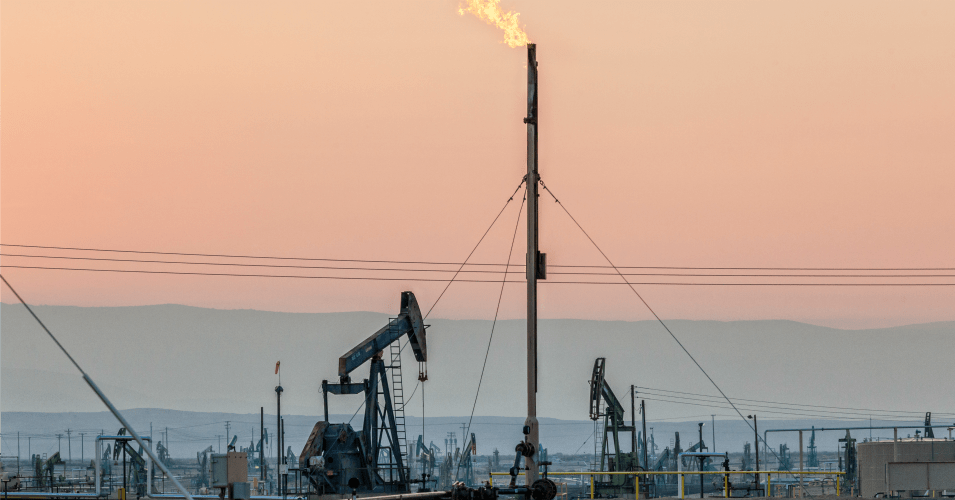Congresswoman says draft rule from CalGEM does not go far enough, should set buffer between homes and existing wells and also end permitting for new wells in this buffer until rule goes into effect
FOR IMMEDIATE RELEASE
December 17, 2021
SAN PEDRO, Calif. – Today, Congresswoman Nanette Diaz Barragán urged the California Geologic Energy Management Division to revise its draft rule on oil and gas production in residential neighborhoods to include existing wells in the proposed 3,200-foot buffer and to end all permits for extraction until the rule goes into effect.
In a letter to California Geologic Energy Management Division (CalGEM) Oil and Gas Supervisor Uduak Joe-Ntuk, Congresswoman Barragán wrote: “While the Draft Rule would prevent drilling of new oil and gas production sites within 3,200 feet of homes, schools, health centers, and other sensitive sites within California, it falls short of protecting frontline communities who presently live, study, and work near existing fossil fuel wells.”
In the letter, Barragán pointed out the connection between increased risk of asthma and other respiratory diseases and proximity of oil and gas wells.
In August, Barragán led U.S. EPA Administrator Michael Regan on a tour of her district to point out environmental justice issues and highlighted the proximity of working oil wells to homes, schools and playgrounds in Wilmington.
“The environmental racism impacting Wilmington is tragically all too common throughout California, where oil and gas wells are predominately located within communities of color,” Barragán wrote in her letter to Joe-Ntuk.
“I strongly urge CalGEM to consider the health and safety of our communities by revising the Draft Rule to establish a 3,200-foot setback distance between all new and existing oil and gas extraction sites, and to end all permitting for fossil fuel extraction within the 3,200-foot setback zone until the rule goes into effect,” she concluded in her letter.
A PDF of the letter can be found here and full text of the letter follows.
Dear Supervisor Ntuk:
The recently released Draft Rule for Protection of Communities and Workers from Health and Safety Impacts from Oil and Gas Production Operations developed by the California Geologic Energy Management Division (CalGEM) does not go far enough to protect frontline communities. I strongly urge CalGEM to consider the health and safety of our frontline communities by enhancing the Draft Rule to include existing wells in the 3,200-foot set-back zone. Additionally, CalGEM should end all permitting for fossil fuel extraction within the 3,200-foot setback zone until the rule goes into effect.
While the Draft Rule would prevent drilling of new oil and gas production sites within 3,200 feet of homes, schools, health centers, and other sensitive sites within California, it falls short of protecting frontline communities who presently live, study, and work near existing fossil fuel wells. Nearly seven million Californians—mostly people of color—live within one mile of an oil or gas well. This is a reality my constituents live with every day, where we have urban oil drilling taking place within 3,200 feet of homes, schools, and businesses. Studies link proximity to oil and gas wells to increased risk of asthma and other respiratory illnesses.
It’s no accident that my district has some of the highest asthma rates in the country. Low-income communities and communities of color who live with existing gas and oil wells in their neighborhoods will continue to experience a shorter life expectancy and worse health outcomes unless CalGEM revises the Draft Rule to include existing wells in the establishment of the 3,2000-foot setback zone between wells and sensitive receptors.
In Wilmington, California, located in my Congressional District, oil wells can be found between homes, behind baseball fields, in the parking lots of churches and stores, and directly next to the local Boys & Girls Club site. The population of Wilmington is also 86 percent Latino. The environmental racism impacting Wilmington is tragically all too common throughout California, where oil and gas wells are predominately located within communities of color.
Furthermore, these disproportionately impacted communities are not only harmed by the health hazards of fossil fuel production, but also lack access to the health services needed to treat the medical conditions caused by prolonged exposure to pollutants from oil and gas extraction. In California, 84 percent of oil and gas wells are placed within medically underserved areas. This is no mistake, the oil industry has continuously sought to expand operations in disadvantaged, vulnerable communities.
As the Representative of California’s 44th Congressional District, a district that includes existing urban oil wells in frontline communities, I strongly urge CalGEM to consider the health and safety of our communities by revising the Draft Rule to establish a 3,200-foot setback distance between all new and existing oil and gas extraction sites, and to end all permitting for fossil fuel extraction within the 3,200-foot setback zone until the rule goes into effect.
###
Nanette Diaz Barragán is proud to represent California’s 44th Congressional District, which includes the communities of Carson, Compton, Florence-Firestone, Lynwood, North Long Beach, Rancho Dominguez, San Pedro, South Gate, Walnut Park, Watts, Willowbrook and Wilmington. She serves as chairwoman of the House Homeland Security Committee’s Subcommittee on Border Security.

